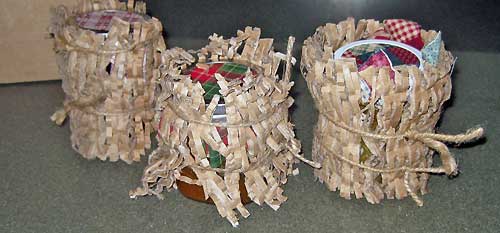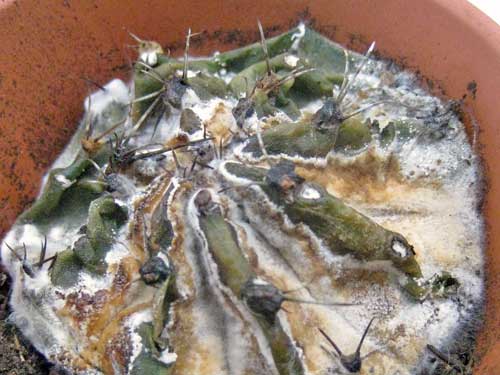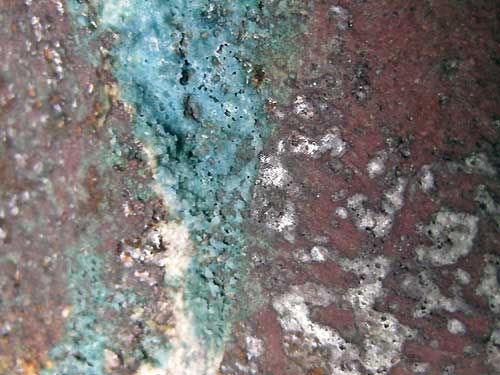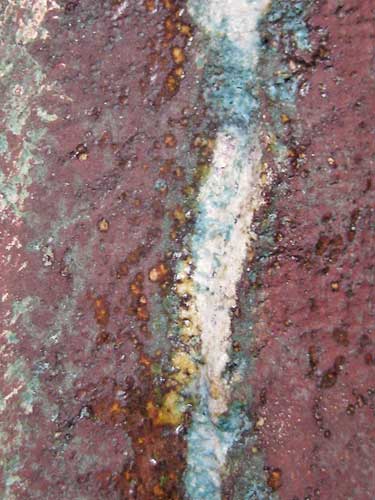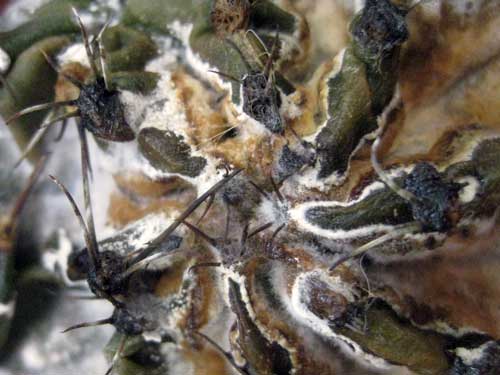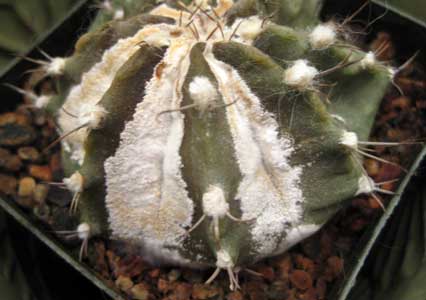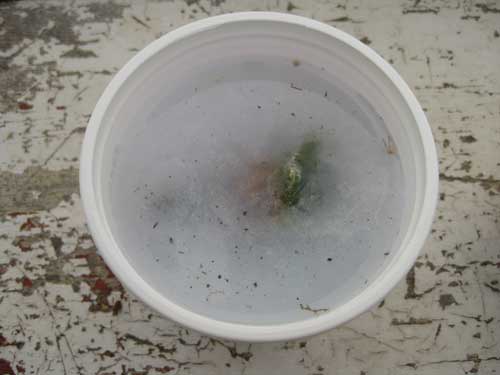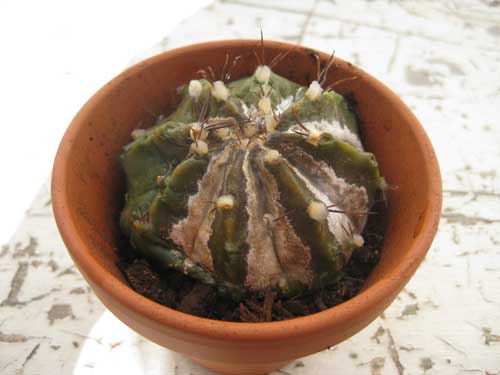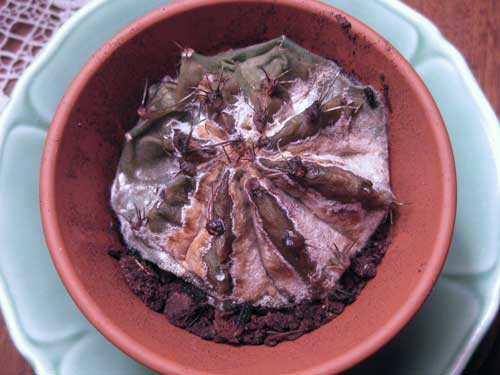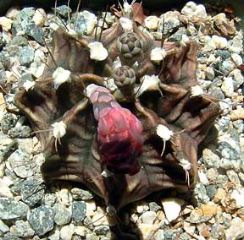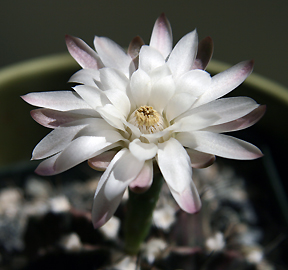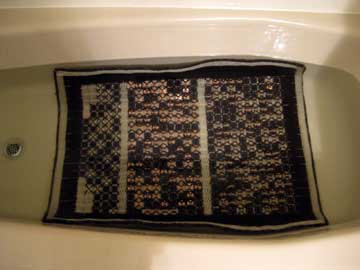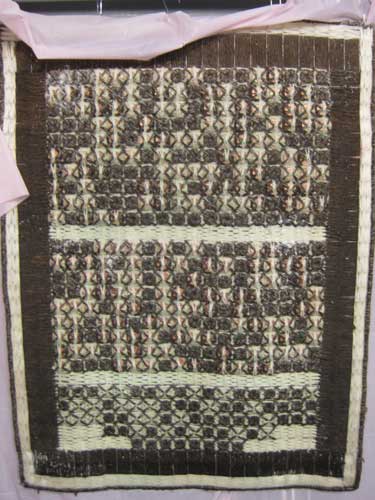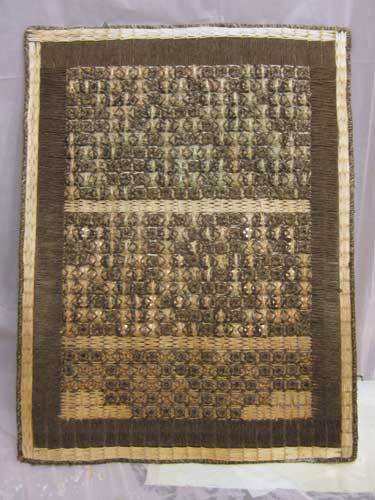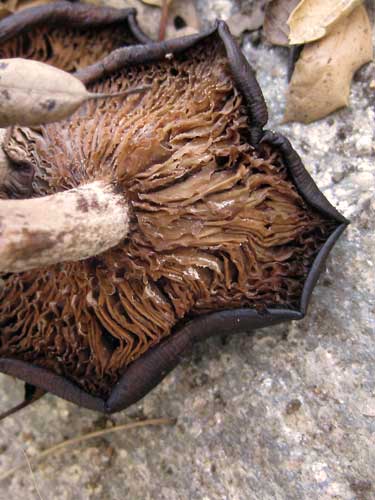I am still fighting case making moths. Last night I opened a jar of small pieces that I made for testing, to find moths living amongst them. I hate killing things, but I am getting quite frustrated with not knowing where or when I will find critters. I am pretty sure that I brought them into the house in hay for the bunnies.
On the Conservation Center site I found this information about a moth infestation of a Tibetan Ladahki Headdress. I had originally read that the only way to kill the moth cycle was heat. Not a good solution, since I previously used wax on some of my pieces. This is the method used–
…frozen to prevent contamination of the other objects in the lab and to kill moth activity, including all adults, larvae and eggs. After remaining in a freezer at -20˚C for one and a half months…
I have been reading a bit about artifacts and conservation looking for information as to how to age/distress components added to artifacts. Thought perhaps some interesting materials or methods to use them might be appropriate for some of my work.
I feel like I am constantly learning new things about, well just about everything. I don’t want to alter the color of the wool pieces too much, but I do need to distress them. Perhaps the solution for future pieces is to distress the wool before I use it, or not use it at all. When I have used hot wax on wool the result is a rather plastic appearance.
I ordered a variety of waxes and am attempting to use cold wax processes. I am liking d-limonene with white and amber microcrystalline, but I do not like that my studio has the odor of orange oil.
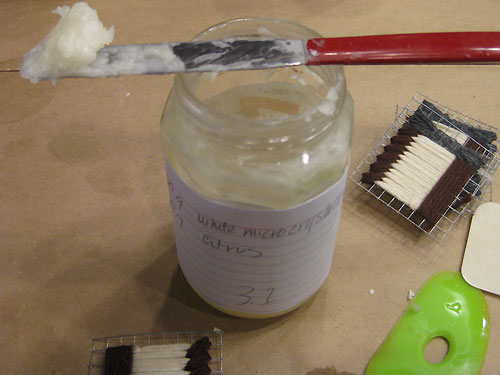
White Microcrystalline Wax with d-Limonene
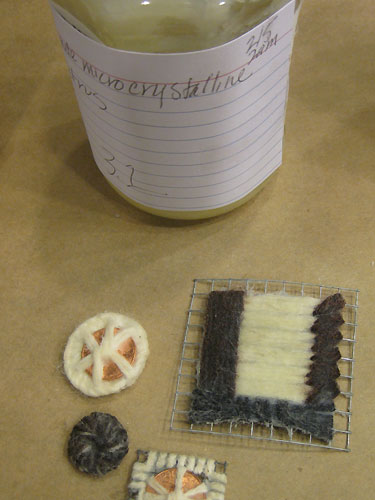
Waxed Pieces
Displaying the finished wool pieces is another problem that I have been thinking about. I was planning to build boxes/crates to house/display the pieces, but then how to keep the pieces in place? I generally opt for nails straight through with a head that I like.
This would be a great option–
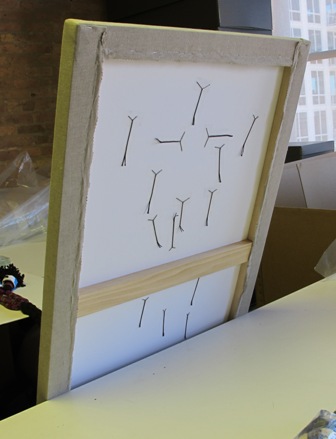
Mounting Headdress. Image from the Conservation Center Site
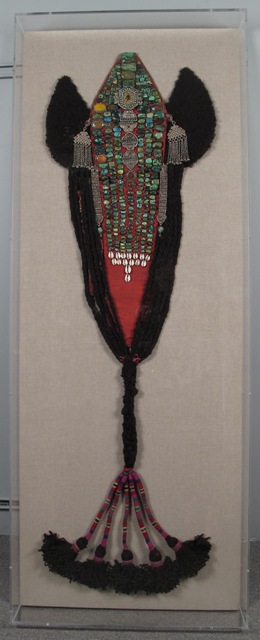
Finished Conservation of Headdress. Image from the Conservation Center Site
